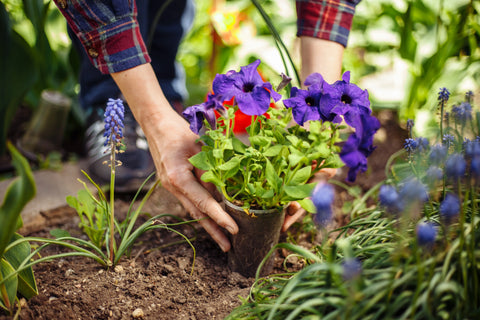Latest Guidance in taking care of Ferns

This is our guide for adequate care of the beautiful Ferns varieties, from forest floors to indoor decorative plants. Read our tips and realize your subsequent green acquisition is a lovely Fern.
Overview |
Ferns produce soft spiraled leaves that extend into lacy fronds. If you choose to walk in the woods, you'll notice Ferns foliage as the forest's carpet under high treetops. Nonetheless, you will see them beautifying your house too, as soon as you get back home. Ferns are aboriginal to basically every side of the world but mainly productive in high humidity places, as tropical rainforest bottom. In its wide variety of subtropical Ferns, many of our preferred indoor spaces come from moderate environments. These Ferns fit perfectly in chilly rooms but don't tolerate too much heat. If you own a tropical variety, you should place it in rooms with central heating. |
Fun fact
|
Some particular sorts of Ferns are epiphytic ones. It signifies they naturally thrive in tree trunks, pebbles, or anything else different than soil so, if you are searching for a stunning ornamental plant to attach to a plank and hang it on a wall, here, you have it. |
|
Pay attention to humidity level and watering frequency. |
Originating from the tropical ecosystem, most Ferns thrive in a humid ambiance. This is why we recommend Fern's owners place their vases on trays of moist stone. Since Ferns succeed in high humidity levels, assuming that these plants grow perfectly in damped conditions is simply trueto-life. And you are right! Ferns need a specified watering schedule with neutral, filtered water at frequent intervals. You can water them less repeatedly if you utilize an artificial humidifier within the room. |
|
Customize its soil composition. |
Ferns need to thrive in a customized soil relatable to their natural habitat ground. Their roots get fed into the light base on the woods floor, rich in leaf mustiness and decayed vegetable elements. Therefore, the appropriate mix must be free draining. Once again, it's vital to water the plant a little bit daily in a warm, dry ambiance so you will prevent the composition of the mud from drying out. |
|
Set its pot in medium sunlight. |
Fern's most favored type of rays is filtered or indirect sunlight since they thrive under the tops of trees in the woods. If you're thinking of where you should establish a pot with Ferns, do it in a south or north-facing window. You don't need a shining light in your place to have beautifully grown-up Ferns. Regardless of being the primary plants on forest bases, they don't endure in areas lacking light. If they do not have their natural dappled sunlight, you might encounter unsatisfactory development and yellowing foliage. On the other hand, direct sun rays will make Fern plants drop their leaves. Another remedy, despite proper positioning, could be artificial light from a specific gardening bulb, not in ordinary light bulbs that generate too extensive warmness. |
|
Adapt its origin's temperature range. |
We started this article by highlighting Fern's origin's importance since it's crucial to its further maintenance. It specifies the plant's adaptability to your living area and climate conditions, whether high or low temperatures. Most Ferns don't thrive in a cold climate. Most tropical Ferns flourish in temperatures from 15 to 21°C, while those originating from regions with temperate climates thrive in temperatures between 10 to 16°C. |
|
Do not ignore sprinkling with fertilizer. |
Feeding with fertilizer is essential for all plants, and Ferns make no exception. Ferns demand some spraying with a liquid fertilizer every two to four weeks in the summer season. Regardless of its benefits, anything has its limits. Too much fertilizer might harm the roots. Otherwise, you can confidently add some drops of fertilizer within the watering process for feeding and misting simultaneously. Ferns rest in the winter months, so it's highly recommended not to fertilize them during that time. Ensure to provide them with humid air all year long and enjoy their growth. |
|
Repotting process is necessary for roots system. |
Fern's repotting process is inevitable when their roots have reached the pot. In case of being bothered by the repotting process, you can scrape off the top coating of the mixture and supersede it with renewed soil. You may witness better development in case of cutting off the damaged ends. Fern's repotting process is straightforward, in any case. Divide them by creating two out of one and cultivate new ones from the fine spores. You can find them in tiny capsules that are seeable as rows of brown patches underneath the fronds. |


